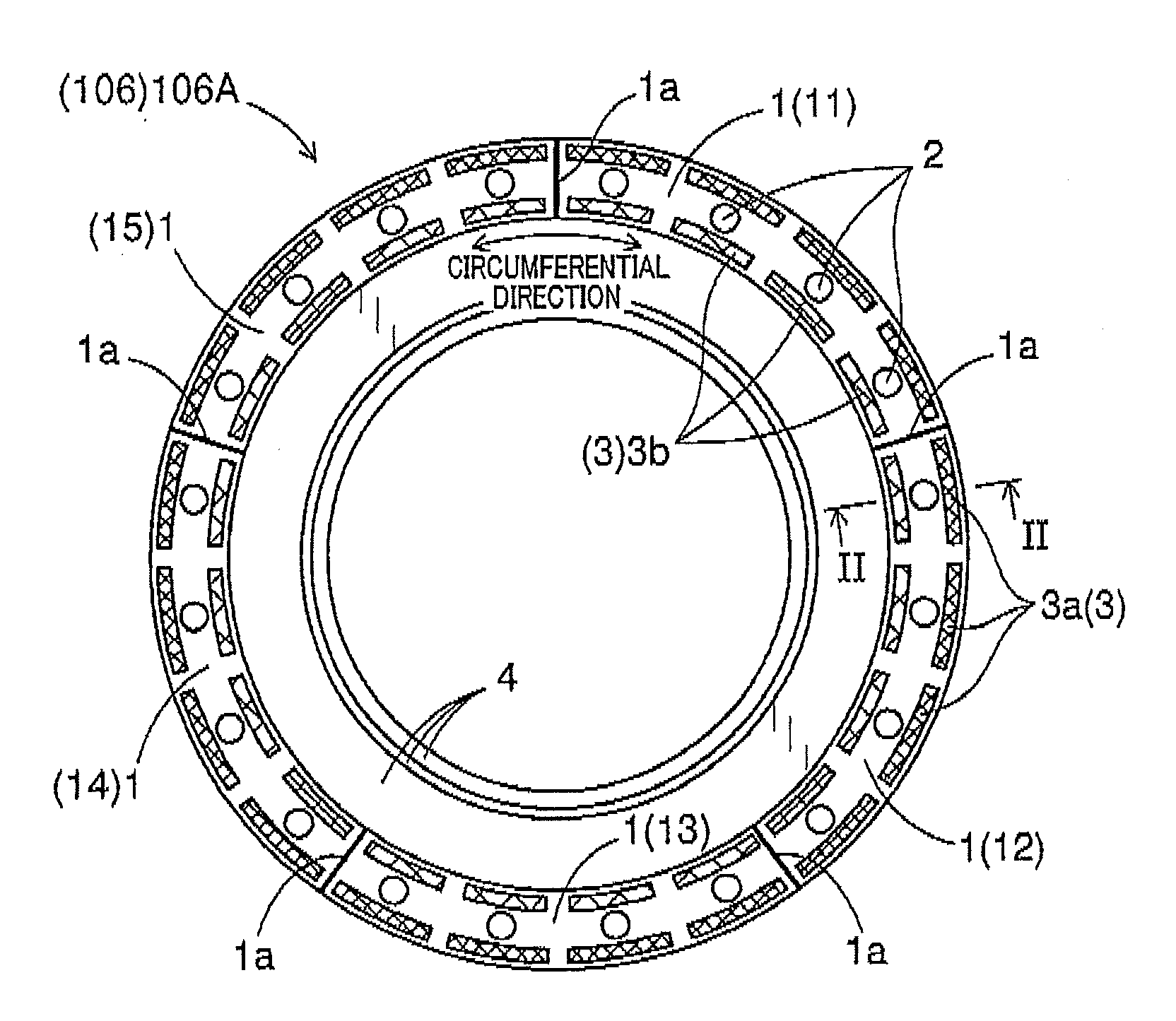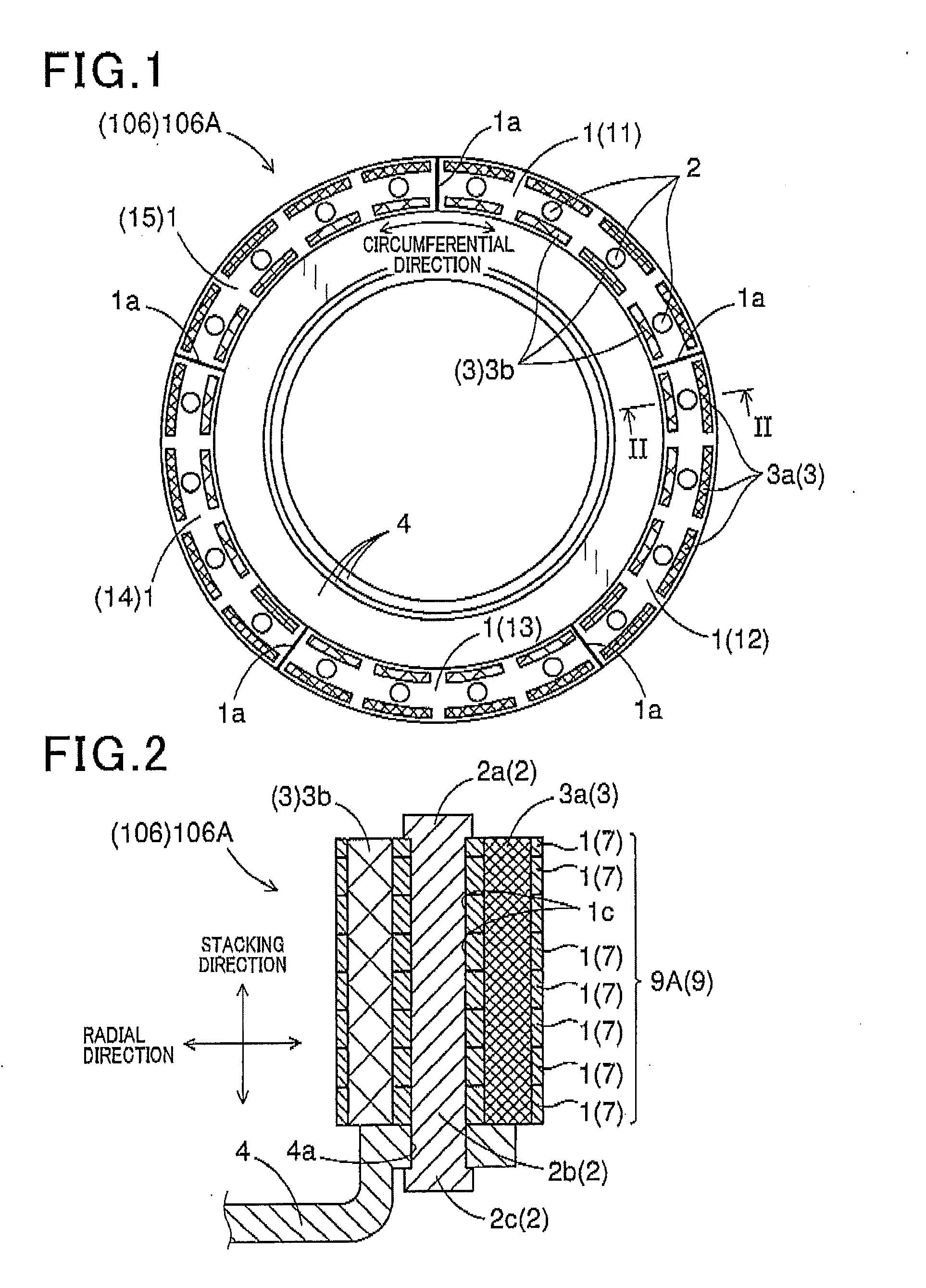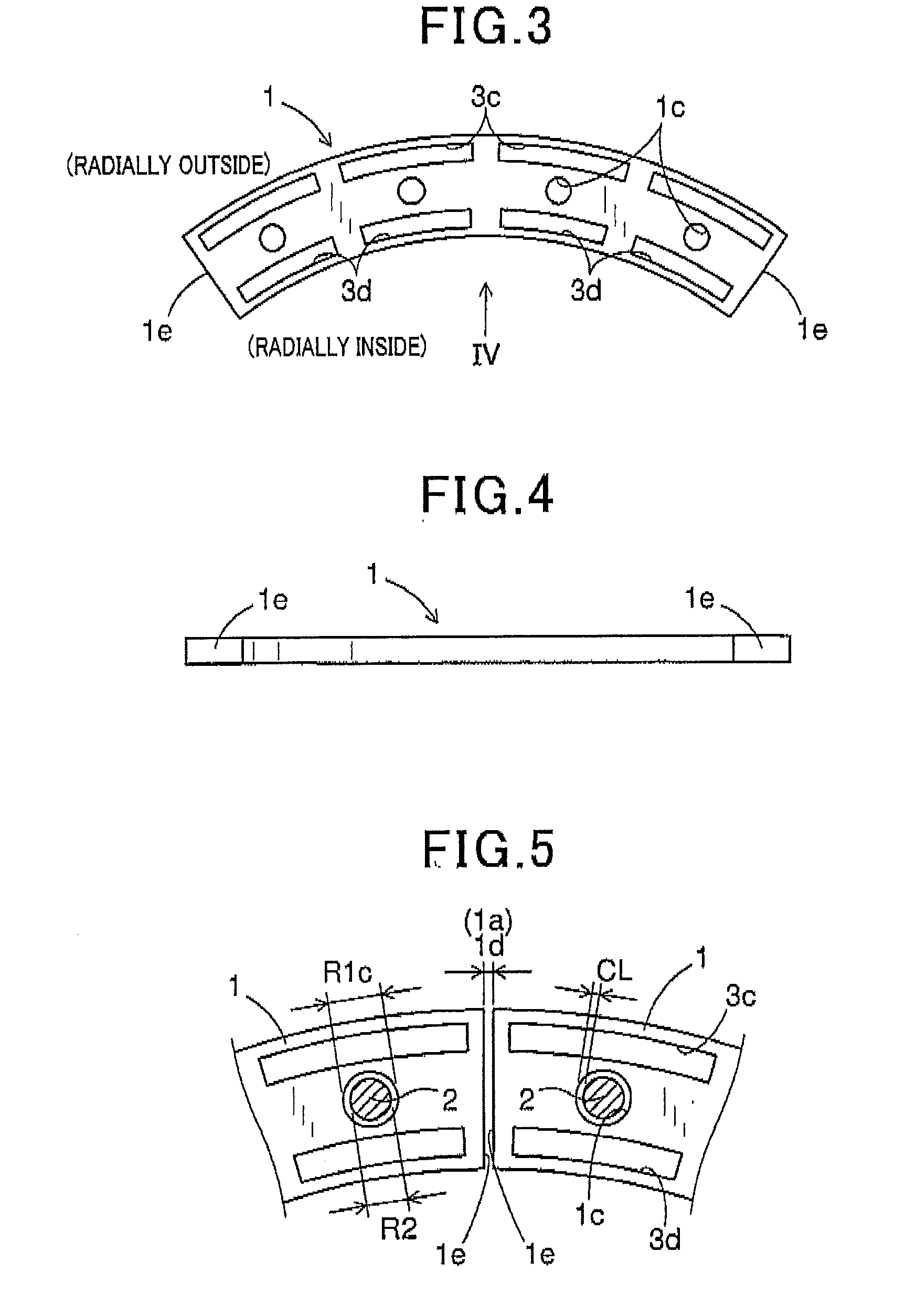Rotor and rotating electric machine
a technology of rotating electric machines and rotors, which is applied in the direction of dynamo-electric machines, magnetic circuit rotating parts, and shape/form/construction of magnetic circuits, etc., can solve the problems of high manufacturing cost and increase in maintenance cost of dies, and the fit between protruding protruding recesses is close to interference fit, so as to reduce time and effort for performing assembly process, facilitate the assembly process of the rotor core, and high roundness
- Summary
- Abstract
- Description
- Claims
- Application Information
AI Technical Summary
Benefits of technology
Problems solved by technology
Method used
Image
Examples
first embodiment
[0043]A first exemplary embodiment will be described hereinafter with reference to FIGS. 1-14.
[0044]FIGS. 1-2 show the overall configuration of a rotor 106A which is an example of a rotor 106 according to the present invention. The rotor 106A includes a rotor core 9A, a plurality of rivets 2, a plurality of radially outer permanent magnets 3a, a plurality of radially inner permanent magnets 3b and a disc 4. The rotor core 9A is an example of a rotor core 9 according to the present invention. In addition, the rivets 2 correspond to “fixing members” of the present invention; the disc 4 corresponds to “a fixed member” of the present invention.
[0045]The rotor core 9A includes a plurality of annular bodies 7 that are stacked in layers in an axial direction of the rotor core 9A, Each of the annular bodies 7 is comprised of a plurality of core segments 1 that are arranged along a circumferential direction of the rotor core 9A (see also FIGS, 6-9). Accordingly, in each of the annular bodies...
second embodiment
[0076]A second exemplary embodiment will be described hereinafter with reference to FIGS. 15-19.
[0077]FIG. 18 shows the overall configuration of a rotor 106B which is another example of the rotor 106 according to the present invention. The rotor 106E includes a rotor core 9B, a plurality of rivets 2, a plurality of radially outer permanent magnets 3a, a plurality of radially inner permanent magnets 3b and a disc 4. The rotor core 9B is another example of the rotor core 9 according to the present invention. The rotor 106B differs from the rotor 106A of the first embodiment only in that the rotor core 9B of the rotor 106B further includes a first plate 5 in comparison with the rotor core 9A of the rotor 106A. The first plate 5 is made of a nonmagnetic material and has a smaller thickness than the core segments 1.
[0078]FIG. 15 shows an annular plate 5A which is an example of the first plate 5. The annular plate 5A has a plate body 5a and a plurality of through-holes 5c formed in the pl...
third embodiment
[0087]A third exemplary embodiment will be described hereinafter with reference to FIGS. 20-24.
[0088]FIGS. 20 and 24 show the overall configuration of a rotor 106C which is yet another example of the rotor 106 according to the present invention. The rotor 106C includes a rotor core 9C, a plurality of rivets 2, a plurality of radially outer permanent magnets 3a, a plurality of radially inner permanent magnets 3b and a disc 4. The rotor core 9C is yet another example of the rotor core 9 according to the present invention. The rotor 1060 differs from the rotor 106E of the second embodiment only in that the rotor core 9C of the rotor 1060 further includes a second plate 6 in comparison with the rotor core 9B of the rotor 106B.
[0089]The second plate 6 is formed of a magnetic material into a predetermined shape. The second plate 6 has a smaller thickness than the core segments 1.
[0090]FIG. 21 shows an annular plate 6A which is an example of the second plate 6. The annular plate 6A has a p...
PUM
 Login to View More
Login to View More Abstract
Description
Claims
Application Information
 Login to View More
Login to View More - R&D
- Intellectual Property
- Life Sciences
- Materials
- Tech Scout
- Unparalleled Data Quality
- Higher Quality Content
- 60% Fewer Hallucinations
Browse by: Latest US Patents, China's latest patents, Technical Efficacy Thesaurus, Application Domain, Technology Topic, Popular Technical Reports.
© 2025 PatSnap. All rights reserved.Legal|Privacy policy|Modern Slavery Act Transparency Statement|Sitemap|About US| Contact US: help@patsnap.com



